
March 6, 2015Business tools & tips, Business visuals & graphics, Cambodia business resources, Indonesia business resources, Laos business resources, Malaysia business resources, Myanmar business resources, Philippines business resources, Southeast Asia business resources, Thailand business resources, Vietnam business resourcesarchaelogy, architecture, culture, history, nature, tourism, UNESCO, wildlife, World Heritage
Southeast Asia is a culturally rich and diverse region counting numerous sites classified by the UNESCO in the World Heritage of Humanity. With some of the world’s most famous sites like Angkor Wat in Cambodia or Ha Long Bay in Vietnam, Southeast Asia is home to 36 wonderful sites that stand out for their natural or cultural value.
The United Nations Educational, Scientific and Cultural Organization – UNESCO – has listed more than 1000 historical and natural sites in the world. With 36 sites already listed in Southeast Asia and many more submitted for review, culture, histories and landscapes have been recognized for their unique value for mankind.
For the curious, tourists and the tourism industry professionals, together with media, artistic, cultural or scientific organizations and businesses of Southeast Asia to name a few, the UNESCO World Heritage Sites represent the common, symbolic importance of the cultural relevance of Southeast Asia.
As a handy list to keep for the use of these professionals and the viewing pleasure of all, here is the complete list of World Heritage Sites in Southeast Asia together with some beautiful pictures.
You can quickly jump to your favorite country’s sites with the following links.
List of the 36 UNESCO World Heritage Sites in Southeast Asia
Note: there are currently no World Heritage Sites listed by UNESCO in Brunei, Singapore and Timor Leste.
2 World Heritage Sites in Cambodia
Angkor
Angkor is a major Southeast Asian archaeological site. It is composed of the remains of the capital of the Khmer Empire, dating from the 9th to the 15th century. The Angkor site especially includes the famous temple of Angkor Wat, the Bayon Temple at Angkor Thom, and the jungle-invaded Ta Phrom temple.
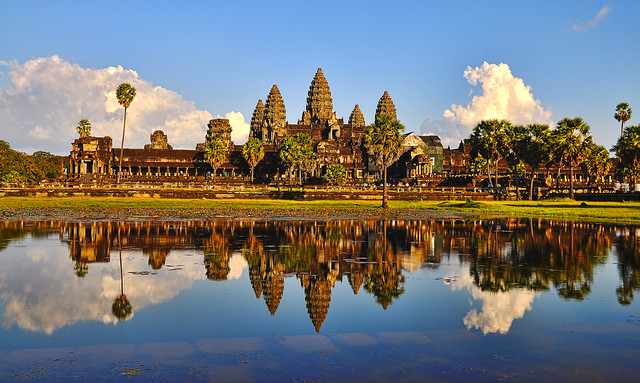
© Photo: jh_tan84

© Photo: colin grubbs
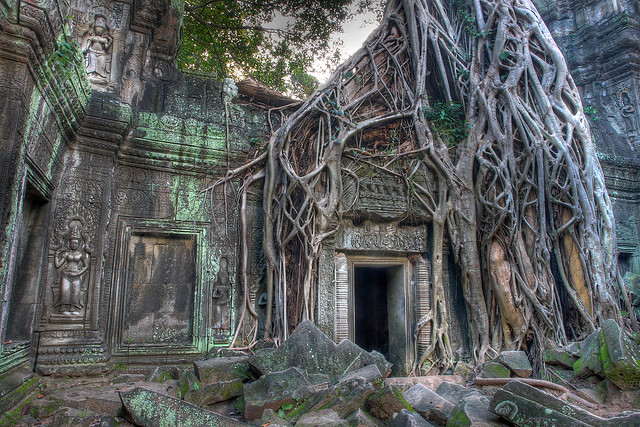
© Photo: David Hogan
- Location: Siem Reap Province, Cambodia
- Site type: cultural
- Size: 40,000 ha
- Year of inscription: 1992
Note: Google created a special website as a part of its Google Maps “Street View” to enable people to explore the Angkor temples at home on their computers.
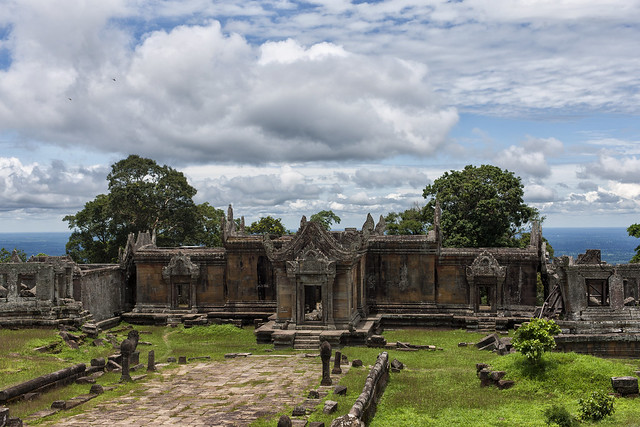
© Photo: Osakabe Yasuo
The temple of Preah Vihear is composed of series of sanctuaries dedicated to the Hindu god Shiva. Its isolation has permitted to preserve its exceptional architecture from the 11th century.
- Location: Preah Vihear Province, Cambodia
- Site type: cultural
- Size: 155 ha with 2,643 ha buffer zone
- Year of inscription: 2008
8 World Heritage Sites in Indonesia
Borobudur Temple Compounds
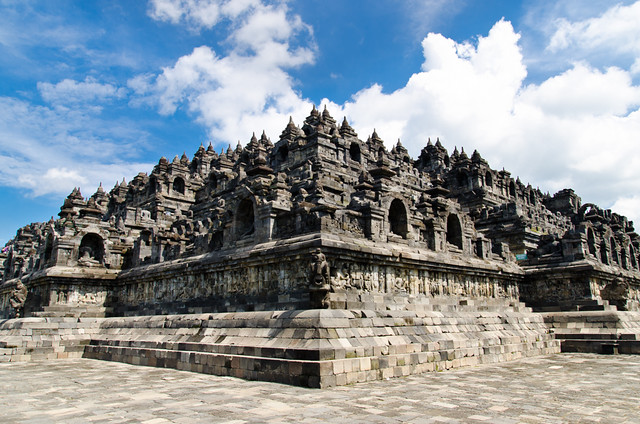
© Photo: regent zakaryya satriandhana
The Borobudur temple is a large Buddhist temple from the 8th and 9th centuries. Situated in central Java, it is famous for its pyramidal shape and numerous stupas arranged in concentric circles, surrounded by finely carved outer walls with numerous statues of Buddha.
- Location: Megalang Regency, Central Java, Indonesia
- Site type: cultural
- Year of inscription: 1991
Komodo National Park

© Photo: Richard Susanto
The Komodo National Park is a natural site made up of volcanic islands that are home to a unique species of giant lizard: the Komodo dragon. The natural landscape and vegetation of the islands add up the zoological interest of this endemic species.
- Location: East Nusa Tenggara, Indonesia
- Site type: natural
- Size: 219,322 ha
- Year of inscription: 1991
Prambanan Temple Compounds
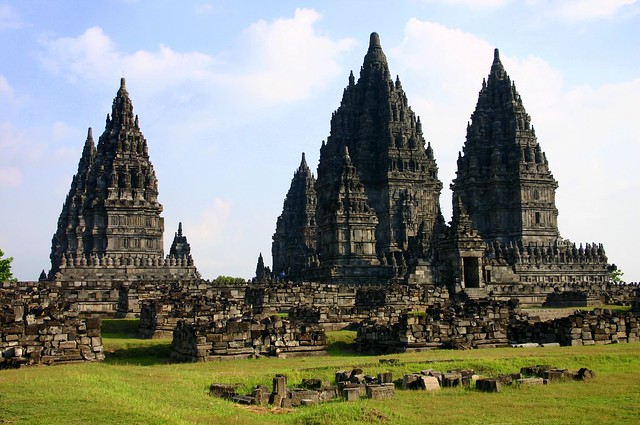
© Photo: zsoolt
The Prambanan temple is a large hindu temple built in the 10th century in central Java. The three main temples in the center of the complex are dedicated to Shiva, Vishnu and Brahma, and decorated with depictions of the Ramayana.
- Location: Central Java, Indonesia
- Site type: cultural
- Year of inscription: 1991
Ujung Kulon National Park
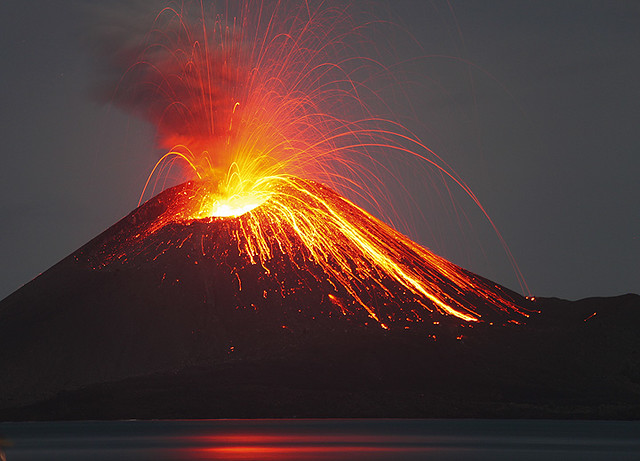
© Photo: Tom Pfeiffer
Located at the South-Western tip of Java, this beautiful natural site is one of the last shelters for several endangered animal species. Composed of the Ujung Kulon peninsula and surrounding islands, it is home to the famous Krakatoa volcano.
- Location: Banten and Lampung, Indonesia
- Site type: natural
- Size: 78,525 ha
- Year of inscription: 1991
Sangiran Early Man Site

© Photo: NCSSM
The Sangiran site is the source of half of all hominids fossils found. Inhabited for one and half million years, its importance to the knowledge of the evolution of man make it a unique place for scientific interest.
- Location: Central Java, Indonesia
- Site type: cultural
- Size: 5,600 ha
- Year of inscription: 1996
Lorentz National Park

© Photo: Michael Thirnbeck
Located in the Papua province, the Lorentz National Park is Southeast Asia’s largest protected natural area. With a great diversity of geography, fauna and flora, the Lorentz national park is a haven for biodiversity.
- Location: Papua, Indonesia
- Site type: natural
- Size: 2,350,000 ha
- Year of inscription: 1999
Tropical Rainforest Heritage of Sumatra
Empcompassing three national parks, Gunung Leuser National Park, Kerinci Seblat National Park and Bukit Barisan Selatan National Park, the Tropical Rainforest Heritage of Sumatra is an endangered site of primary forest and endemic species under threat of destruction.

© Photo: Arddu
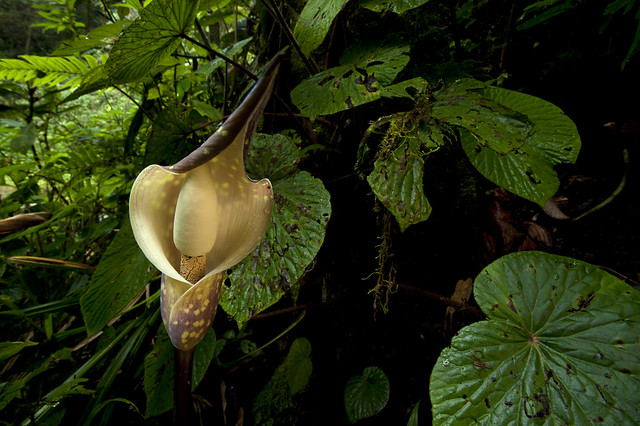
© Photo: Arddu
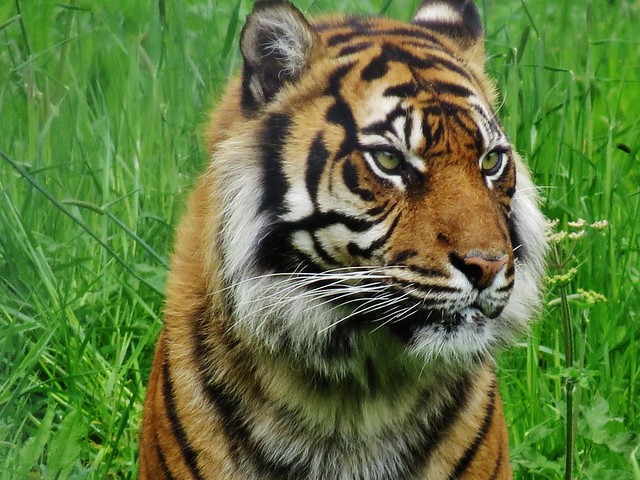
© Photo: Sue Everett
- Location: Sumatra, Indonesia
- Site type: natural. This site has been listed as endangered since 2011 due to poaching, illegal logging and encroachments for agriculture and roads projects.
- Size: 2,595,124 ha
- Year of inscription: 2004
Cultural Landscape of Bali Province: the Subak System as a Manifestation of the Tri Hita Karana Philosophy
Composed of five rice terraces, water temples including the famous Pura Ulun Danu Batan temple and canals, the egalitarian Subak water management system originates from the 9th century. Proving very effective for rice farming, this water system is the manifestation of the philosophical concept of Tri Hita Karana, that assembles the world of men, spirits and nature.
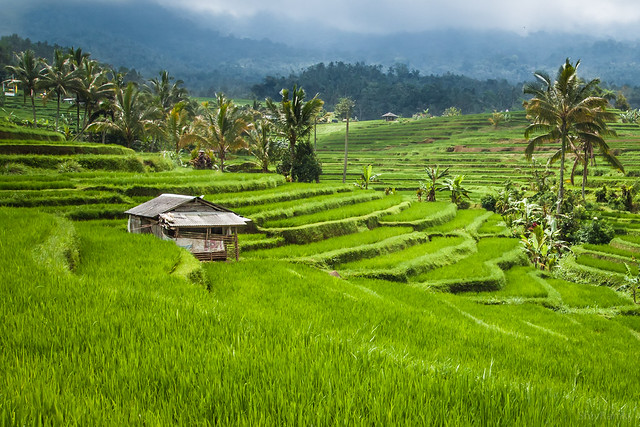
© Photo: Sivakumar Ramakrishnan
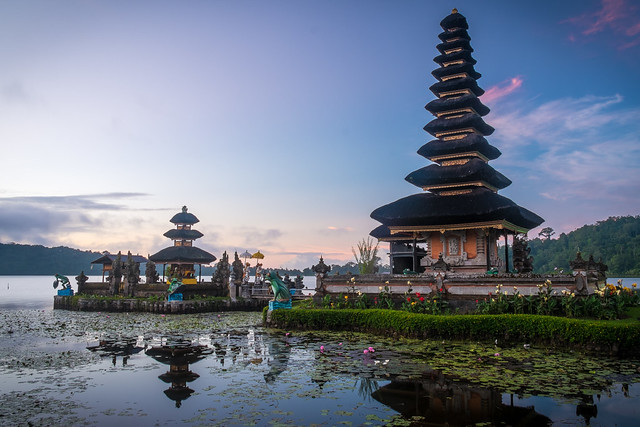
© Photo: balbo42
- Location: Bali, Indonesia
- Site type: cultural
- Size: 19,520 ha
- Year of inscription: 2012
2 World Heritage Sites in Laos
Town of Luang Prabang
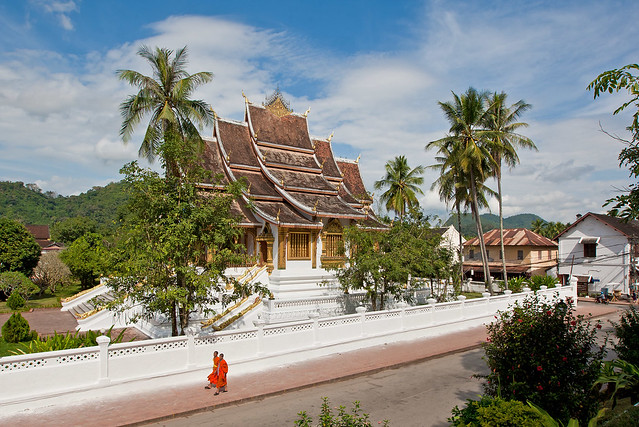
© Photo: Benedikt Saxler
The ancient capital of the old Kingdom of Laos, Luang Prabang is a town that gathers traditional Lao architecture and French colonial buildings from the 19th and 20th century in a remarkably well-preserved blend of European and Asian cultures.
- Location: Luang Prabang Province, Laos
- Site type: cultural
- Year of inscription: 1995
Vat Phou and Associated Ancient Settlements within the Champasak Cultural Landscape

© Photo: Alessandra
The Champasak Cultural Landscape was built between the 5th and 15th century under the rule of the Khmer Empire. Various structures are organized in a geometric pattern that embodies the Hindu vision and relationship between man and nature, including two cities, the Vat Phou temple complex and other temples, shrines and waterworks.
- Location: Champasak Province, Laos
- Site type: cultural
- Size: 39,000 ha
- Year of inscription: 2001
4 World Heritage Sites in Malaysia
Gunung Mulu National Park
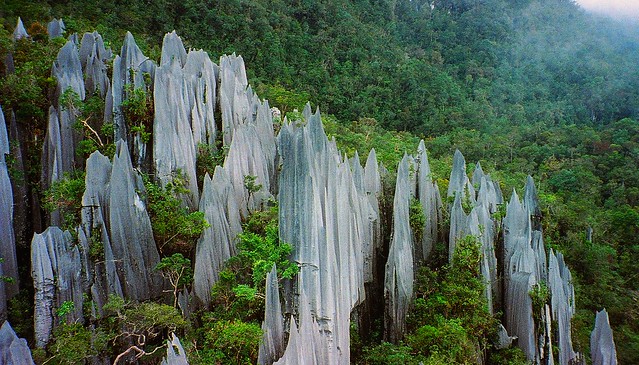
© Photo: Paul White
With a very rich biodiversity, the Gunung Mulu National Park is located on the island of Borneo. The park is especially famous for its karstic features, and the resulting caves created by the dissolution of rocks in the humid climate.
- Location: Northern Sarawak, Borneo, Malaysia
- Site type: natural
- Size: 52,864 ha
- Year of inscription: 2000
Kinabalu Park

© Photo: jon jacob
Mount Kinabalu is the highest mountain of Southeast Asia, reaching 4,095 meters at its highest point. The surrounding park is host to a beautiful natural landscape with diverse range of habitats and a very rich flora.
- Location: Sabah, Borneo, Malaysia
- Site type: natural
- Size: 75,370 ha
- Year of inscription: 2000
Melaka and George Town, Historic Cities of the Straits of Malacca
Developed in the past centuries as points of exchange between Western and Eastern civilizations, the historic cities of Malacca and Georgetown are beautiful remnants of multicultural heritage on the Straits of Malacca.
Malacca
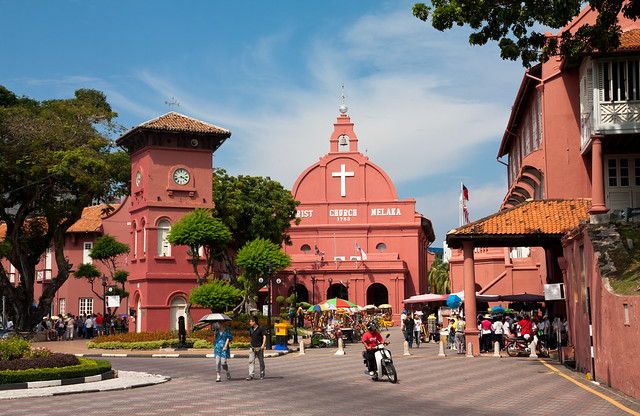
© Photo: Stefan Klauke
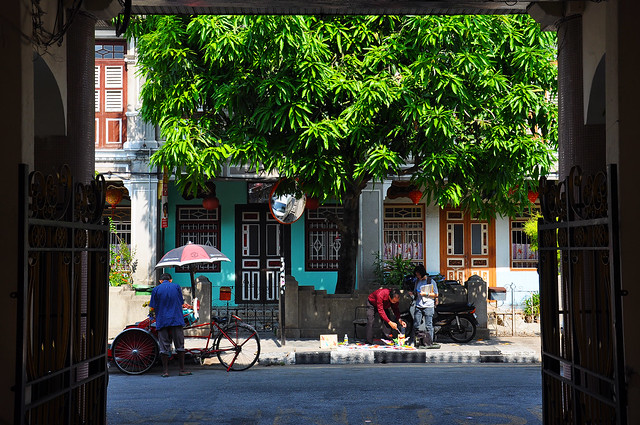
© Photo: Fredrik Nyberg
- Location: Malacca and Penang, Malay Peninsula, Malaysia
- Site type: cultural
- Size: 148 ha with 284 ha buffer zone
- Year of inscription: 2008
In Malacca, as in many other places in Malaysia and Southeast Asia, the preservation of heritage sites needs to be integrated with modern life for the local communities and the interests of tourists. To learn more on how value is added to heritage sites, watch this video on how heritage is maintained and recycled in Malacca and Malaysia.
Archaeological Heritage of the Lenggong Valley
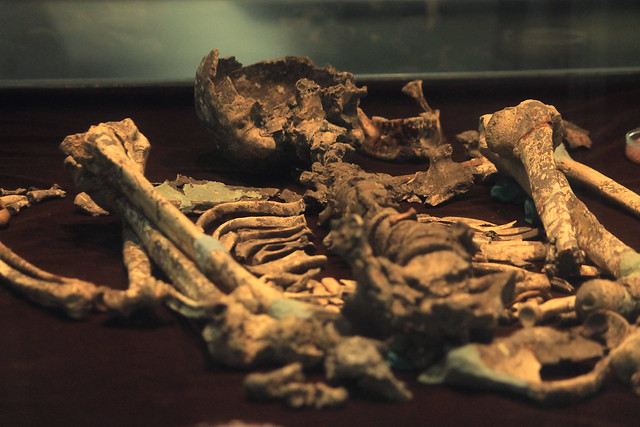
© Photo: eazytraveler
The Lenggong Valley regroups four archaeological sites with remains from the earliest continued human settlement outside of Africa. This lush area with several caves provides scientific clues on the Palaeolithic, Neolithic and Metal ages.
- Location: Perak, Malaysia
- Site type: cultural
- Size: 399 ha
- Year of inscription: 2012
1 World Heritage Site in Myanmar
Pyu Ancient Cities
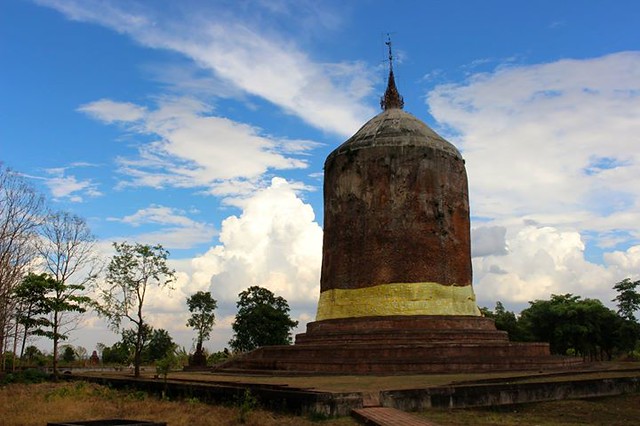
© Photo: caz.vandevere
In the Irrawady basin, the three ancient cities of Halin, Beikthano and Sri Ksetra are remains of the Pyu kingdoms that spanned eleven centuries from 200 BC to 900 AD. With various ruins from royal, religious and production buildings and remnants of an irrigation system, they exhibit a rich Buddhist culture.
- Location: Mandalay, Magway and Bago, Myanmar
- Site type: cultural
- Year of inscription: 2014
6 World Heritage Sites in the Philippines
Baroque Churches of the Philippines
The four baroque Roman Catholic Churches were constructed under in the Philippines Spanish rule between the 16th and 18th century. These churches were built in Manila, Santa Maria, Paoay and Miag-ao but they collectively demonstrate a reinterpretation by Chinese and Filipino craftsmen of European Baroque architecture and decoration.

© Photo: Rafael Reyes

© Photo: Remar Lapastora
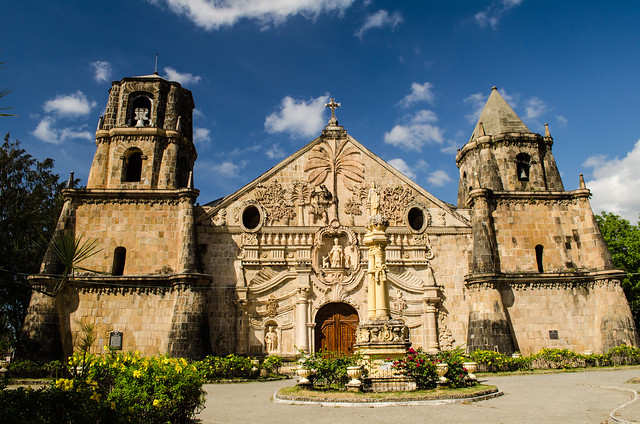
© Photo: interruptedz
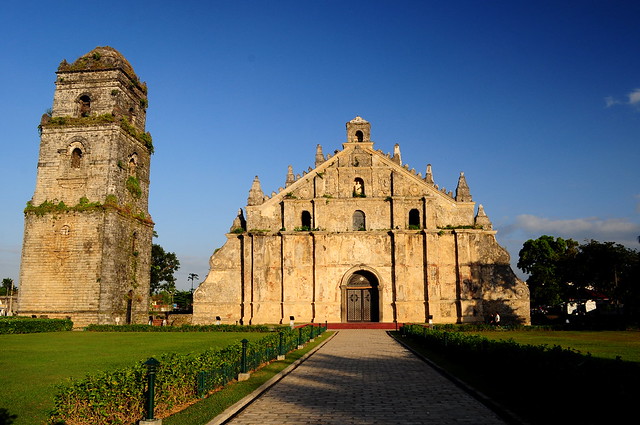
© Photo: Ferdinand Manuel
- Location:
- Manila, Philippines
- Santa Maria, Ilocos Sur, Philippines
- Miag-ao, Iloilo, Philippines
- Paoay, Ilocos Norte, Philippines
- Site type: cultural
- Year of inscription: 1993
Tubbataha Reefs Natural Park
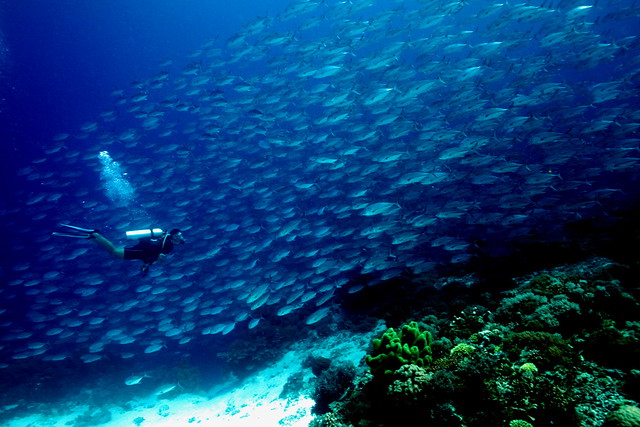
© Photo: q phia
The atoll reef of Tubbataha is a pristine coral reef hosting a very dense and varied marine wildlife. The Tubbataha Reefs Natural Park covers more than 130,000 ha and includes two coral islands, several lagoons and an extensive coral reefs with a 100m perpendicular wall.
- Location: Cagayancillo, Palawan, Philippines
- Site type: natural
- Size: 130,028 ha
- Year of inscription: 1993
Rice Terraces of the Philippine Cordilleras
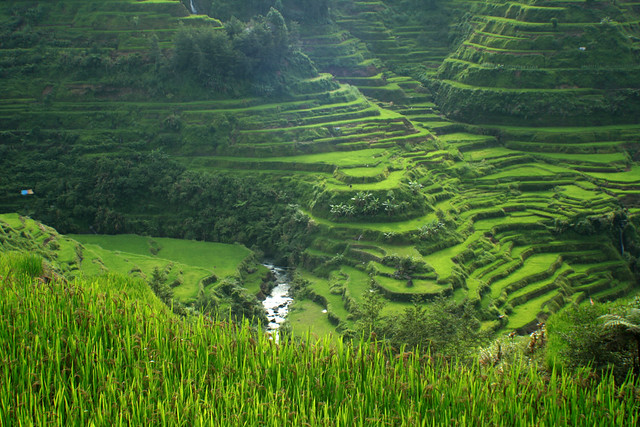
© Photo: laz’andre
The terraced rice fields of Ifugao have been formed out of the mountain slopes for more than 2,000 years. This agricultural tradition has created an exceptional landscape, fruit of the harmonious human integration into its natural habitat.
- Location: Ifugao, Cordillera Region, Philippines
- Site type: cultural
- Year of inscription: 1995
Historic Town of Vigan

© Photo: Kenneth Paige
The town of Vigan is the archetype of Spanish colonial urban planing and architecture in the Philippines. Founded in the 16th century, the Historic Town of Vigan hosts many of well preserved European-style buildings, making it an unequaled cultural jewel in Southeast Asia.
- Location: Ilocos Sur, Philippines
- Site type: cultural
- Year of inscription: 1999
Puerto-Princesa Subterranean River National Park
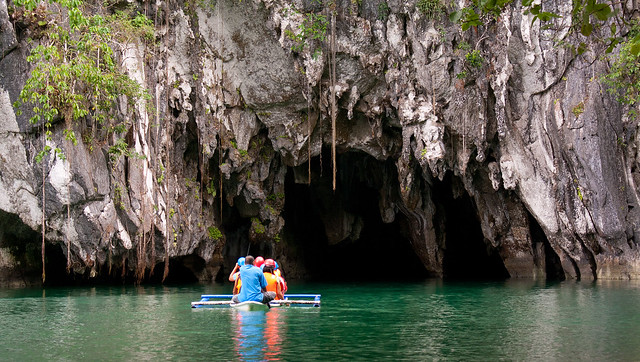
© Photo: ryan descallar
The Puerto-Princesa Subterranean River National Park is composed of a karstic landscape, with the particularity of having a underground river flowing under the limestone reliefs. It is a significant natural preservation site, with a “mountain-to-sea” ecosystem and dense forests with rich biodiversity.
- Location: Palawan, Philippines
- Site type: natural
- Size: 5,753 ha
- Year of inscription: 1999
Mount Hamiguitan Range Wildlife Sanctuary
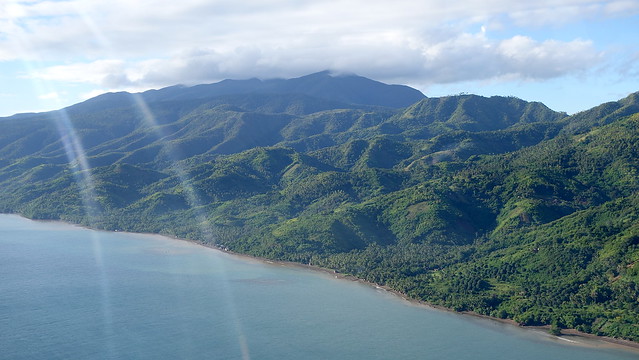
© Photo: Peter Harlow
Ranging from 75 to 1,637m above sea level, the Mount Hamiguitan Range Wildlife Sanctuary hosts several land and water eco-systems of different elevations. The sanctuary provides habitat for a diverse array of fauna and flora, including several endangered endemic plant and animal species.
- Location: Davao Oriental, Philippines
- Site type: natural
- Year of inscription: 2014
5 World Heritage Sites in Thailand
Historic City of Ayutthaya
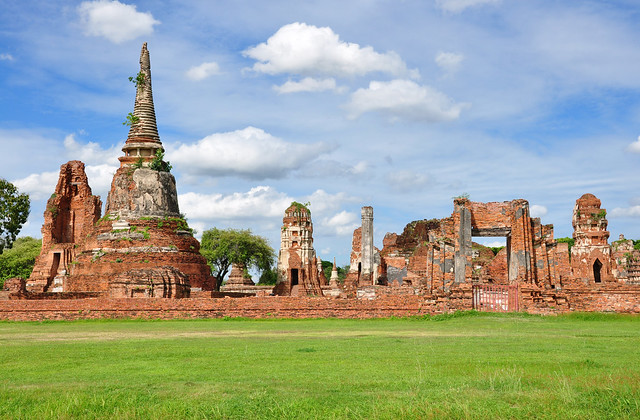
© Photo: Oliver Davis
Ayutthaya was the capital of the Kingdom of Siam from the mid 14th century until its destruction by the Burmese in the 18th century. The numerous remains of large religious and administrative buildings are as many clues to imagine how splendid the city must have been.
- Location: Ayutthaya Province, Thailand
- Site type: cultural
- Size: 289 ha
- Year of inscription: 1991
Historic Town of Sukhothai and Associated Historic Towns
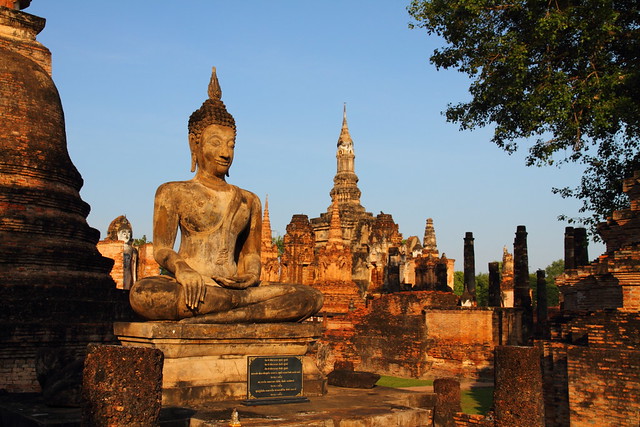
© Photo: Takashi Mizoguchi
Sukhothai was the first capital of the Kingdom of Siam, in the 13th and 14th centuries. The remaining monuments present how various influences and traditions were assimilated in the “Sukhothai style” by the Siamese people to create a distinct culture.
- Location: Sukhothai and Kamphaeng Phet Provinces, Thailand
- Site type: cultural
- Size: 11,852 ha
- Year of inscription: 1991
Thungyai-Huai Kha Khaeng Wildlife Sanctuaries
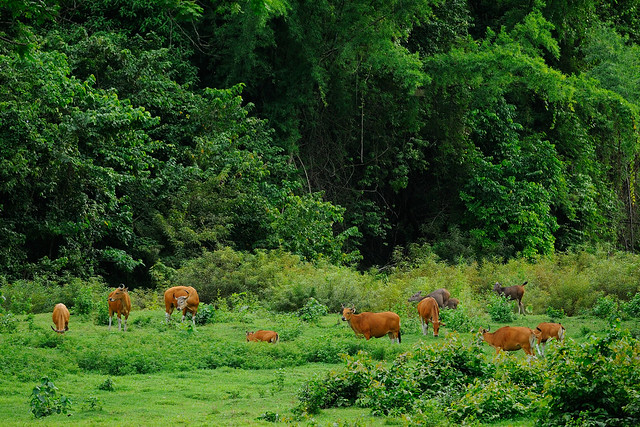
© Photo: tontantravel
The Thungyai-Huai Kha Khaeng Wildlife Sanctuaries encompass almost all kinds of forests from Southeast Asia. With more than 600,000 ha situated on the border with Myanmar, the wildlife sanctuaries are home to a vast array of fauna, including several endangered species.
- Location: Kanchanaburi, Tak and Uthai Thani Provinces, Thailand
- Site type: natural
- Size: 622,200 ha
- Year of inscription: 1991
Ban Chiang Archaeological Site
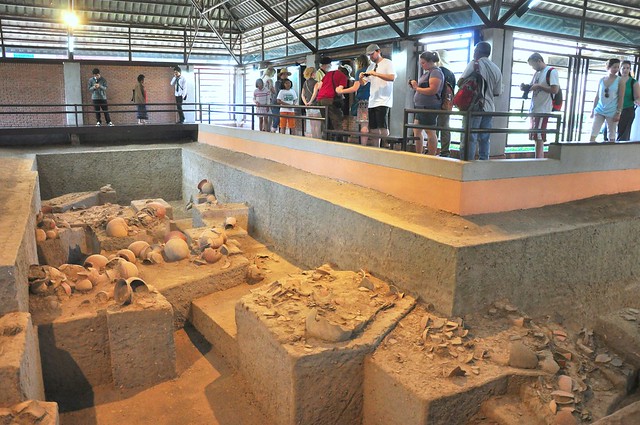
© Photo: Brian Hoffman
One of the most important prehistoric settlement, Ban Chiang gathers evidence of human evolution in Southeast Asia. With artifacts, human and building remains, it displays on of the earliest use of metals and agriculture in the region.
- Location: Udon Thani Province, Thailand
- Site type: cultural
- Size: 64 ha
- Year of inscription: 1992
Dong Phayayen-Khao Yai Forest Complex
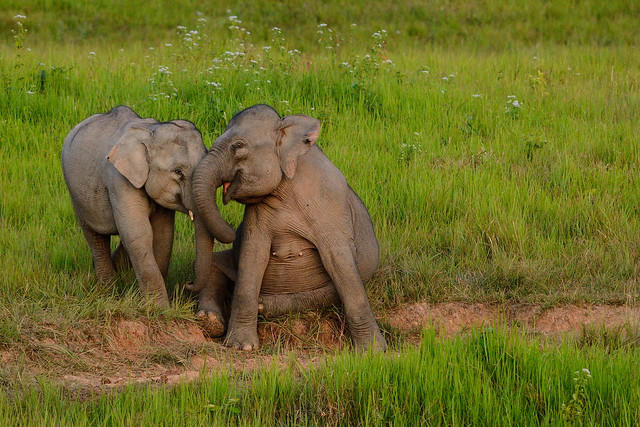
© Photo: tontantravel
The Dong Phayayen-Khao Yai Forest Complex is a large, protected tropical forest located on the border with Cambodia. Especially important for the preservation of fauna, it is key to the long-term survival of several endangered animal species.
- Location: Saraburi, Nakhon Ratchasima, Nakhon Nayok, Prachinburi, Sa Kaeo and Buriram Provinces, Thailand
- Site type: natural
- Size: 615,000 ha
- Year of inscription: 2005
8 World Heritage Sites in Vietnam
Complex of Hué Monuments
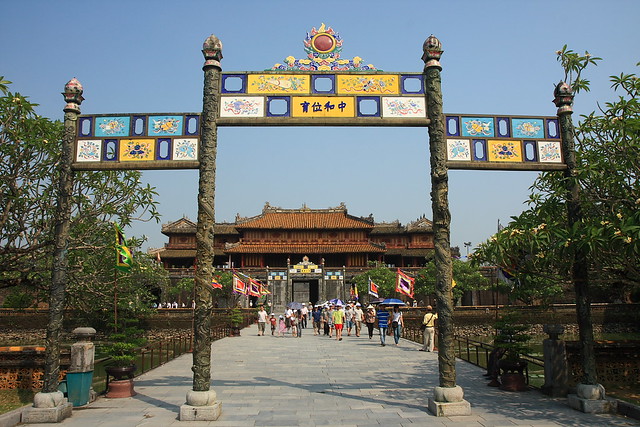
© Photo: Loboalpha
Hué was the capital unified Vietnam from 1802 to 1945, center of political, cultural and religious influence of the Nguyen dynasty. With several buildings remaining along the Perfume River of the old Capital City, the Imperial City, the Forbidden Purple City and the Inner City, Hué is the landmark of the imperial Vietnamese history, arts and architecture.
- Location: Thừa Thiên–Huế Province, Vietnam
- Site type: cultural
- Year of inscription: 1993
Ha Long Bay

© Photo: Vinh.NT
Gathering more than 1,600 limestone islets in the Gulf of Tonkin, Ha Long Bay is an iconic seascape of verticals cliffs and jungle spread across the sea. The site’s beauty is famous around the world, and it is also a haven for biodiversity.
- Location: Quảng Ninh Province, Vietnam
- Site type: natural
- Size: 150,000 ha
- Year of inscription: 1994
Hoi An Ancient Town

© Photo: J Durok
The commercial activity of the port of Hoi An made it an important trade center from the 15th to the 19th century. Local and foreign traders have left their marks with numerous buildings that make up an exceptionally well-preserved ancient town with diverse influences.
- Location: Hội An, Quảng Nam Province, Vietnam
- Site type: cultural
- Size: 30 ha with 280 ha buffer zone
- Year of inscription: 1999
My Son Sanctuary

© Photo: James Tan
Developed from the 4th to 13th century, the My Son Sanctuary regroups the remains of several temples. This site used to be the political and religious capital of the Champa Kingdom, which was located on the coast of Vietnam and traced its cultural heritage from Indian Hinduism.
- Location: Duy Phú, Duy Xuyên District, Quảng Nam Province, Vietnam
- Site type: cultural
- Size: 142 ha with 920 ha buffer zone
- Year of inscription: 1999
Phong Nha-Ke Bang National Park
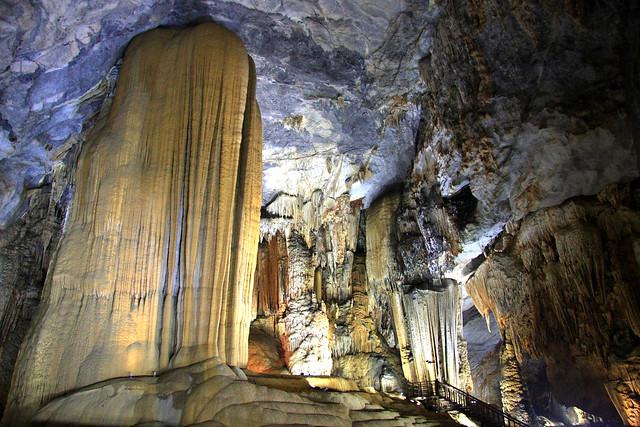
© Photo: lien
The Phong Nha-Ke Bang National Park is the oldest karst formation in Southeast Asia. With 65 km of caves and underground river, the park hosts a very complex karst landscape with significant geomorphic features.
- Location: Bố Trạch and Minh Hóa districts, Quảng Bình Province, Vietnam
- Site type: natural
- Size: 85,754 ha
- Year of inscription: 2003
Central Sector of the Imperial Citadel of Thang Long – Hanoi
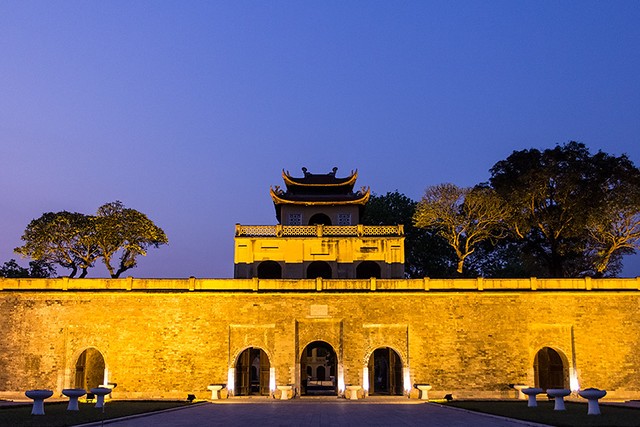
© Photo: Eugene
When the Dai Viet kingdom got its independance from China under the Ly dynasty, it built the Thang Long Imperial Citadel which remained its political center for 13 centuries. The central sector of the Citadel embodies a unique culture from the Red River area, influenced from the North by China and from the Champa kingdom in the South.
- Location: Hanoi, Vietnam
- Site type: cultural
- Size: 18 ha with 108 ha buffer zone
- Year of inscription: 2010
Citadel of the Ho Dynasty
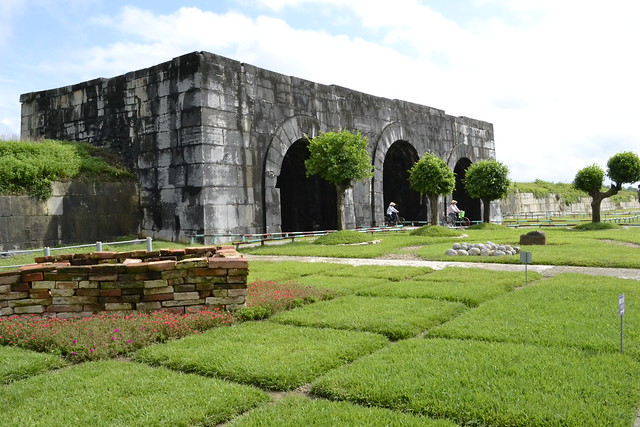
© Photo: Loi Nguyen Duc
The Citadel of the Ho Dynasty dates back to the 14th century. Reflecting the spread of Neo-Confucianism in that period, it was built according to the Feng Shui principles in a plain between the Ma and Buoi rivers along an axis between the Tuong Son and Don Son mountains.
- Location: Tây Giai, Vĩnh Lộc District, Thanh Hóa Province, Vietnam
- Site type: cultural
- Size: 156 ha with 5,079 ha buffer zone
- Year of inscription: 2011
Trang An Landscape Complex

© Photo: Đỗ Việt Cường
Situated in the south of the Red River delta, the Trang An Landscape Complex is a breathtaking area of karst limestone peaks piercing out of low cultivated valleys. Area of cultural significance as it has inhabited for more than 30,000 years, human traces in Trang An provide significant information on the Neolotic, Bronze Age, up to the historic era. It is also the site of Hao Lu, ancient capital of Vietnam from the 10th and 11th centuries.
- Location: Ninh Binh Province, Vietnam
- Site type: mixed, natural and cultural
- Year of inscription: 2014
 So here is the full list of the 36 UNESCO World Heritage Sites in Southeast Asia. For more information about them, other sites submitted for review or information on its activities, visit the website of the United Nations Educational, Scientific and Cultural Organization – UNESCO.
So here is the full list of the 36 UNESCO World Heritage Sites in Southeast Asia. For more information about them, other sites submitted for review or information on its activities, visit the website of the United Nations Educational, Scientific and Cultural Organization – UNESCO.
No comments:
Post a Comment